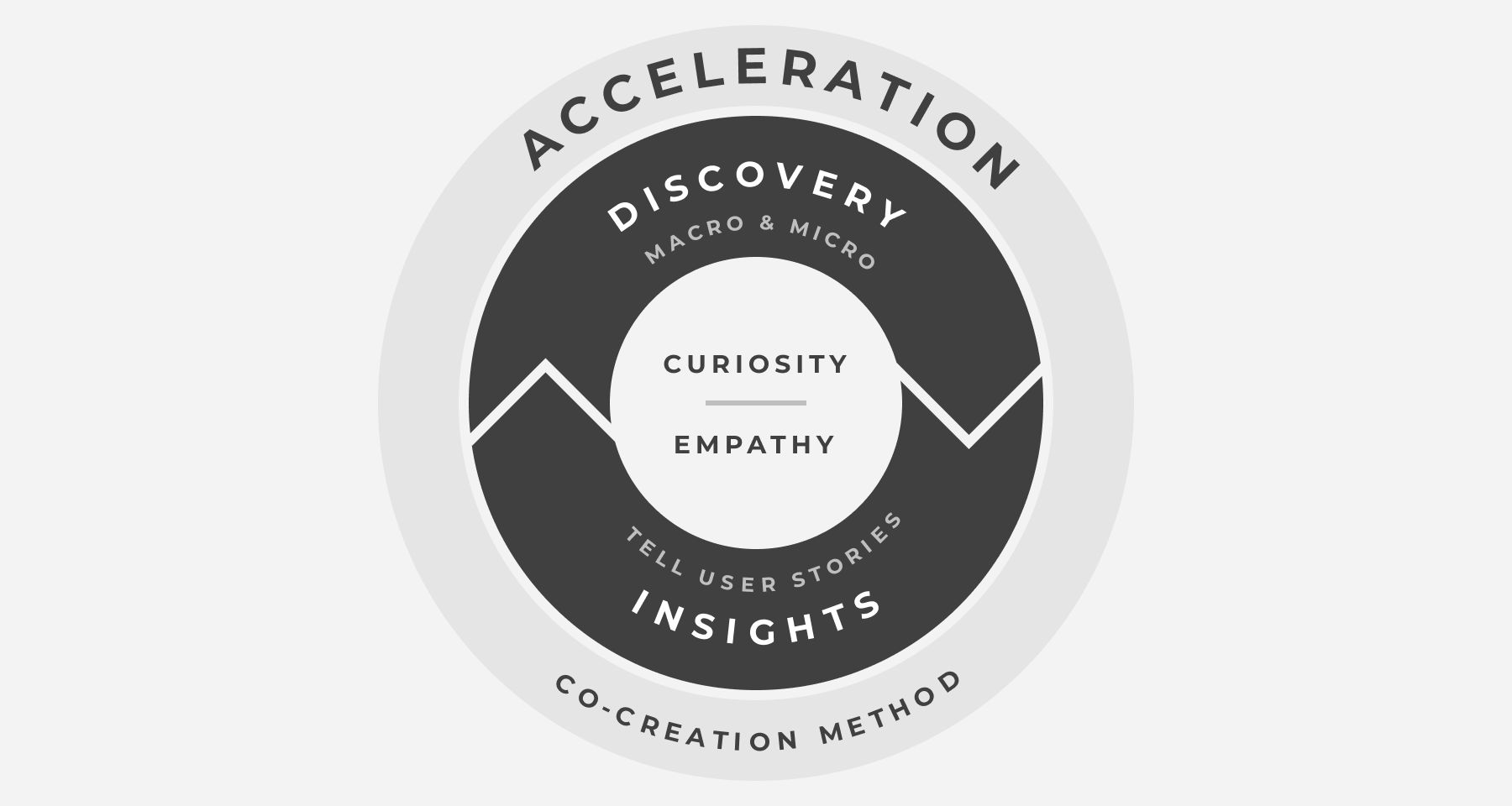The Power of Design Thinking in the Era of Digital Transformation
6.2 minutes

Pete Ryan
Mismatch: In the age of digital transformation, data is generated and captured every moment. Companies are becoming increasingly aware of the enormous amounts of data they have and can capture, as well as the largely untapped opportunity to leverage this data in order to compete.
Take FedEx for example. Imagine real time-data captured with every single hand off from package drop-off, let’s say in Sudbury, Massachusetts, USA to delivery, in downtown New Delhi, India. FedEx could leverage that data to:
- Improve customer experience with real-time updates on package location and condition
- Simplify the driver, delivery, pilot, experience
- Drive efficiency in its worldwide operations
- Reinvent new business models—the FedEx of flower/food/pharma/anything-anyone-needs-delivered-delivery?
Amazing, right? This is the essence of digital transformation.
The global market for digital transformation, will more than quadruple over the next 7 years from 400 Billion to 1.7 Trillion. That’s a T, for “Trillion”!
However, a mismatch lies between the way technology companies sell and what customers require to pull off digital transformation.
Why? On the whole, tech companies haven’t changed their go-to-market approach, with sellers selling one product or service to the customer leader in charge of that area, even though the seller organization has a multitude of solutions and the customer has a multitude of needs.
Furthermore, Sales is often compensated solely for selling a product or service line. Therefore, Sales is oriented at finding the supply chain problem and supply chain leader, for example. In parallel, another sales team from the same company may be seeking time with the HR team to talk about a Human Capital solution in the same customer organization. In this scenario, as long as the leaders in the Customer Supply Chain and the CHRO are happy, the two sales teams make their numbers, get comped, and everyone moves on.
But what happens when the customer realizes the opportunity for enterprise-wide digital transformation—transformation that includes not only HR and Supply Chain, but their CRM, their marketing functions, their operations, their finance, and eCommerce? And what happens to the Supply Chain and the HR sales teams when a competing organization engages the customer’s C-suite about digital transformation? Suddenly the supply chain and HR sellers become irrelevant because they don’t understand the customer’s systemic issues or opportunity.
There is not one solution to this issue as it is complex to solve, but we know one piece of the puzzle. Design Thinking.

Design Thinking helps teams simplify the overwhelming and unlock the inspiring. How? Design is a co-creative, collaborative problem-solving methodology which provides an ideal path forward in the age of digital transformation. The process has a ruthless focus on the customer and calls on a wide range of stakeholders from all sides to work together. This naturally converts the traditional seller-buyer dynamic from adversarial and distrustful to collaborative and co-creative.
It calls on the anthropologist in all of us to do deep discovery into the underlying issues and opportunities from multiple view points BEFORE solving anything. It also places emphasis on problem-finding, revealing to the customer and seller organizations the depth and breadth of problems and solutions.
Not only have we bet our business on this idea, major tech organizations like Microsoft, Salesforce, EOS, ServiceNow, and Kyndryl are incorporating Design Thinking methods into their Enterprise Sales motions because they understand its long-term value. Salesforce recently announced $1B in revenue from 4 multi-cloud deals. The race is on to rethink sales and to embed Design Thinking into go-to-market enterprise strategies.
What does “embed” actually look like? Instead of hiring outside Design talent, companies have begun to enable members of account teams to use Design methods and facilitate Design-inspired workshops and processes. We predict that Sales leaders/teams will soon be expected to facilitate various Design inspired processes as they orchestrate large teams through a Deal Cycle.
What will some of these activities look like?
- Conduct deep discovery on the end users, focusing on problem-finding across your customer’s business, particularly focused on how end customers and employees are connected (or not) to the macro and micro business priorities
- Convene a cross section of seller and customer players to align on a shared understanding of the problem
- Conduct an Envisioning session together to imagine the future state and inspire the customer to co-create the solution with you
- Determine the business value of digital transformation
Chances are, you’re already doing a number of these things. Now ask yourself, how many enterprise, digital transformation deals are you knocking down each year? If your answer is somewhere south of “all of my deals”, then you, like most of us, have greater potential.

